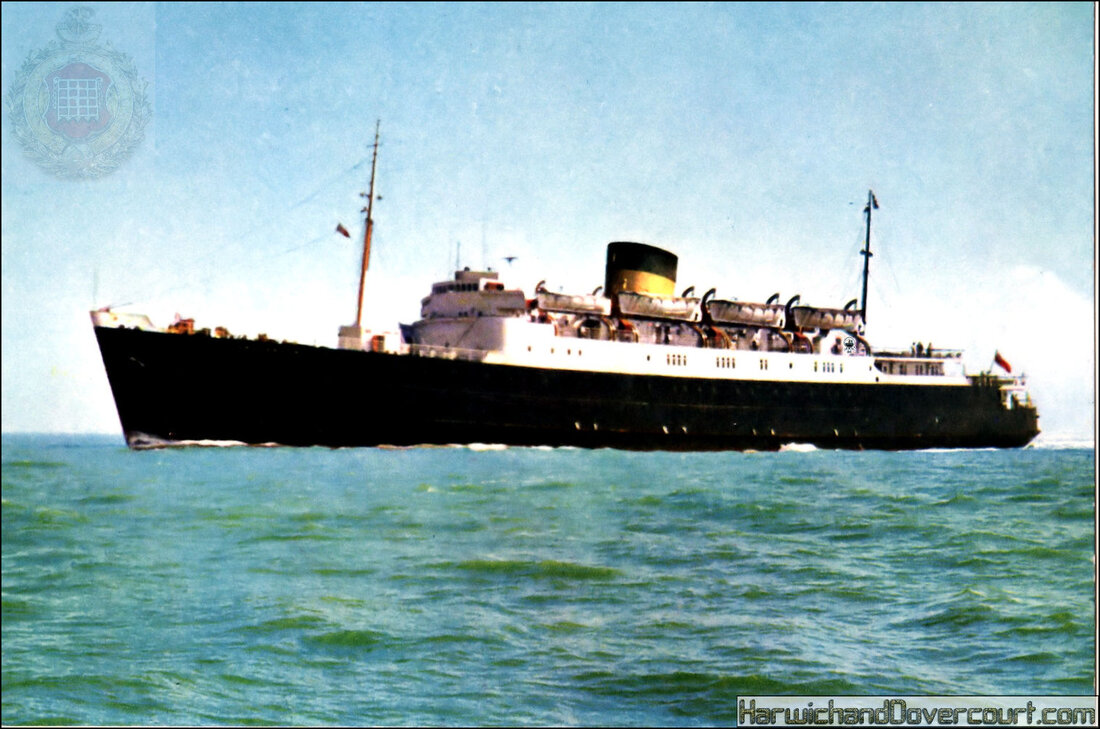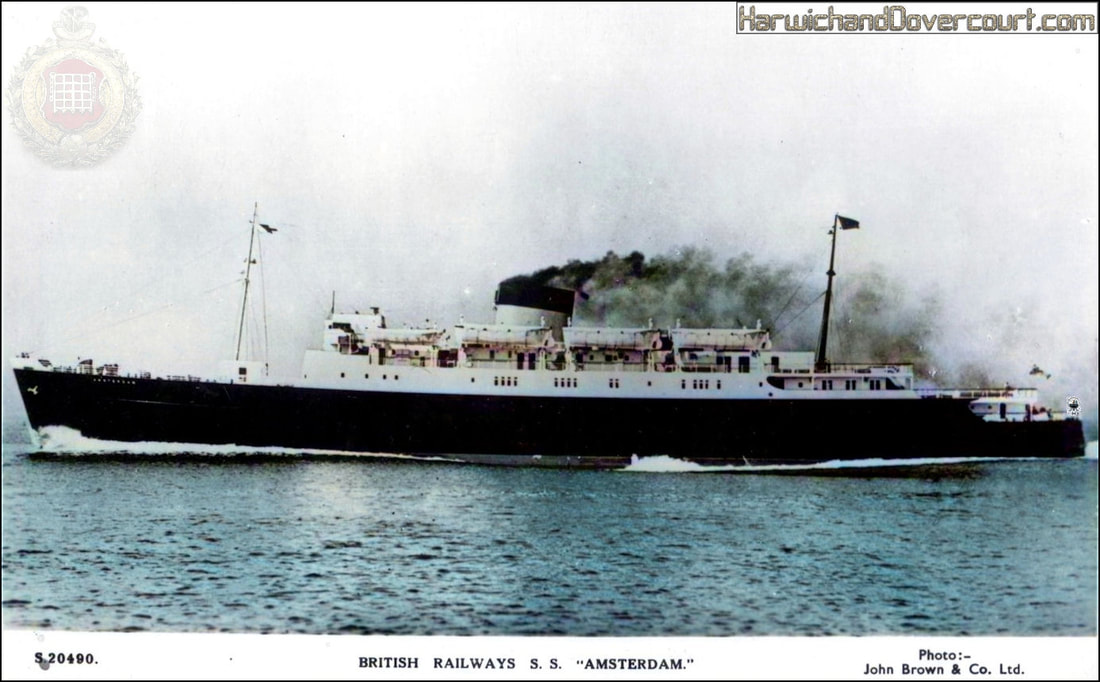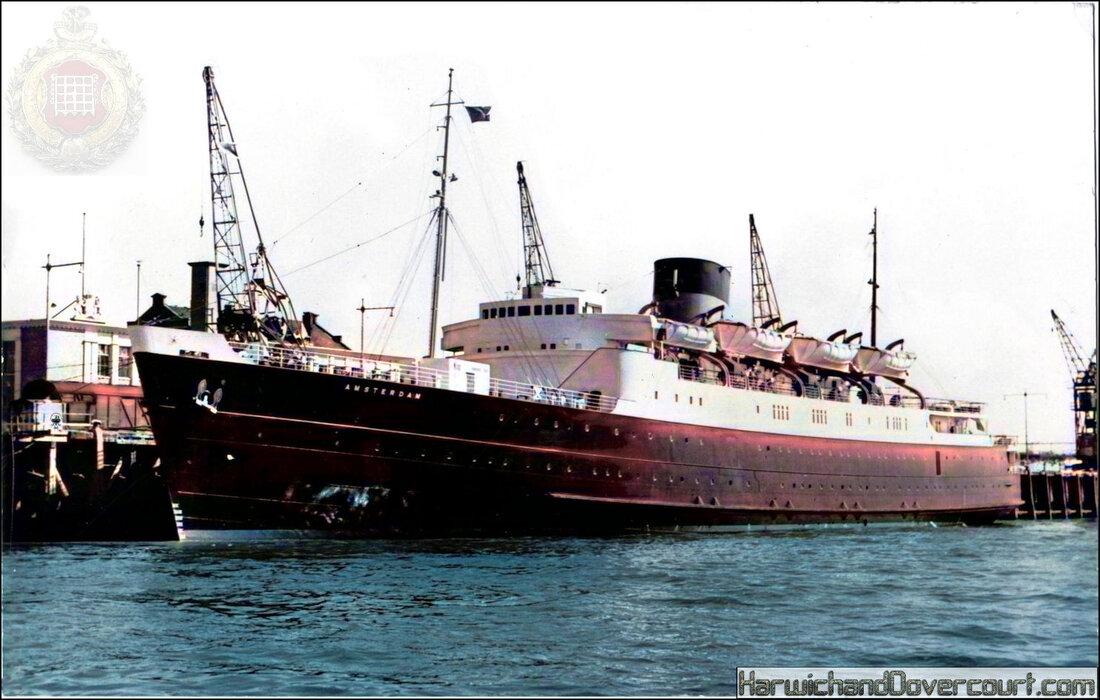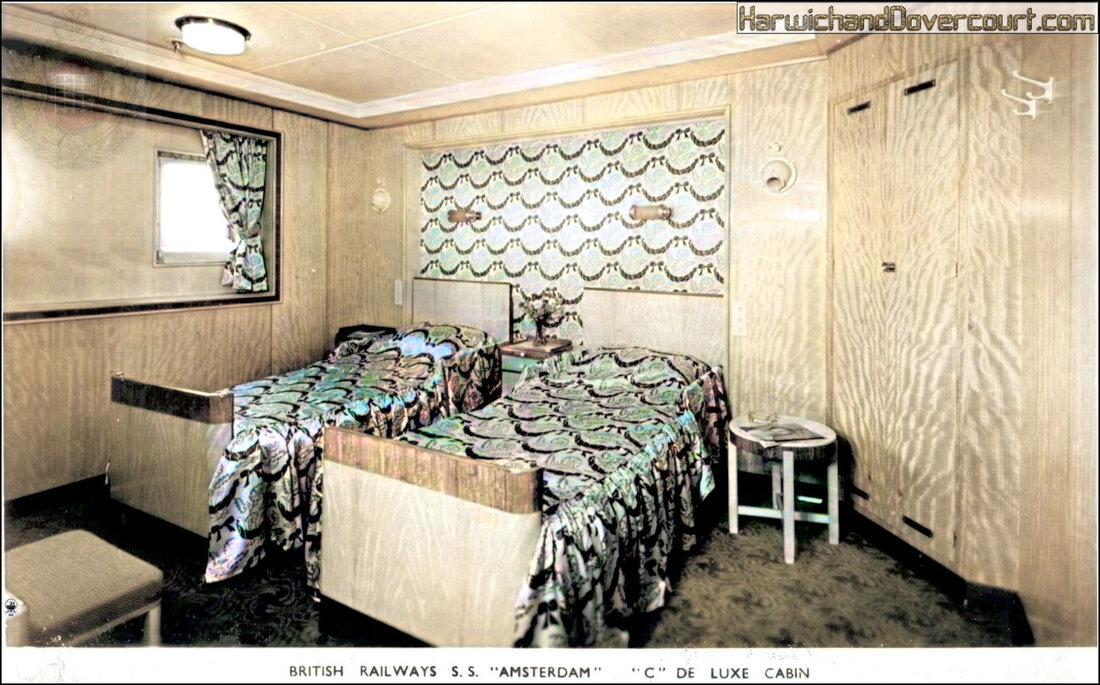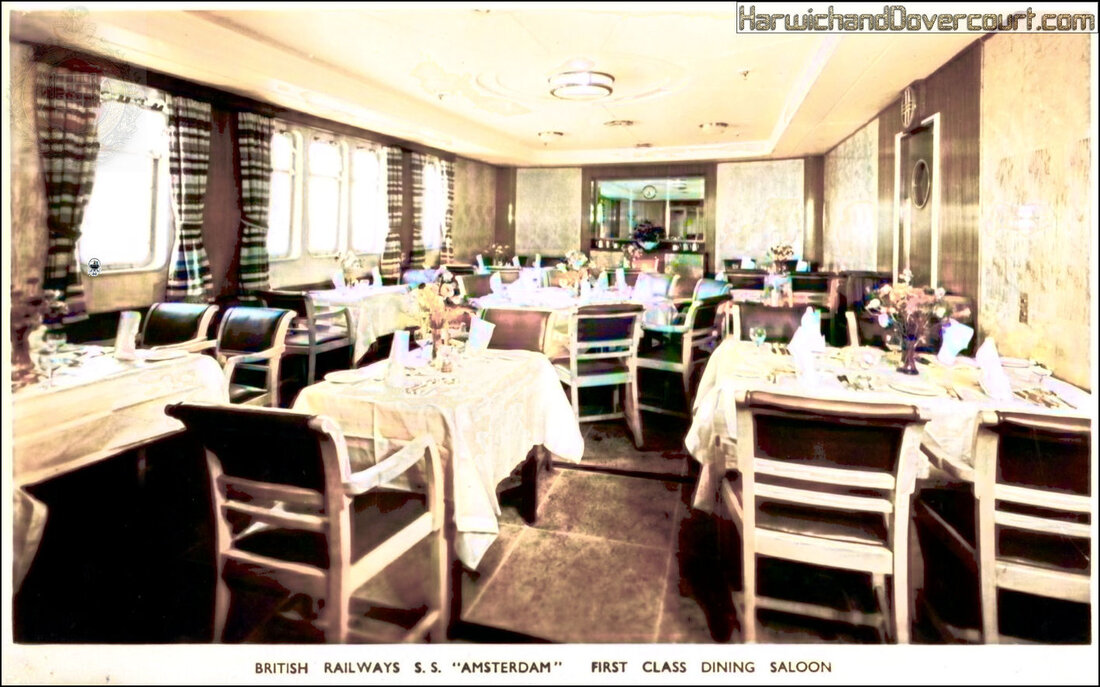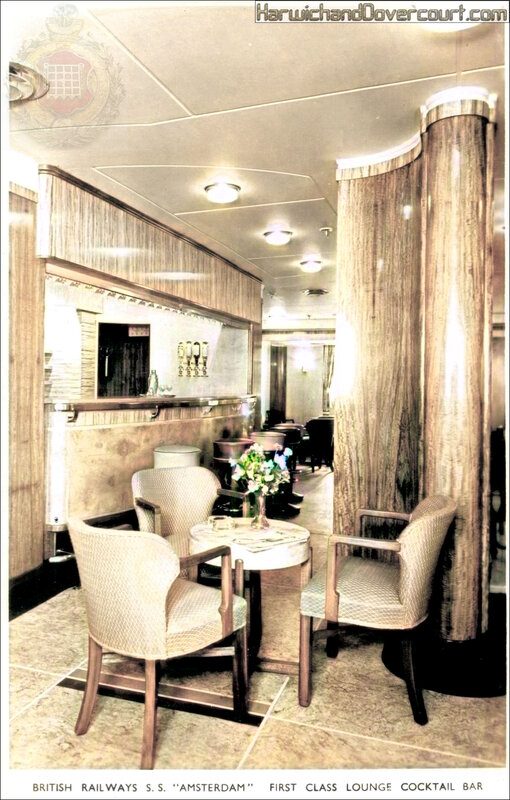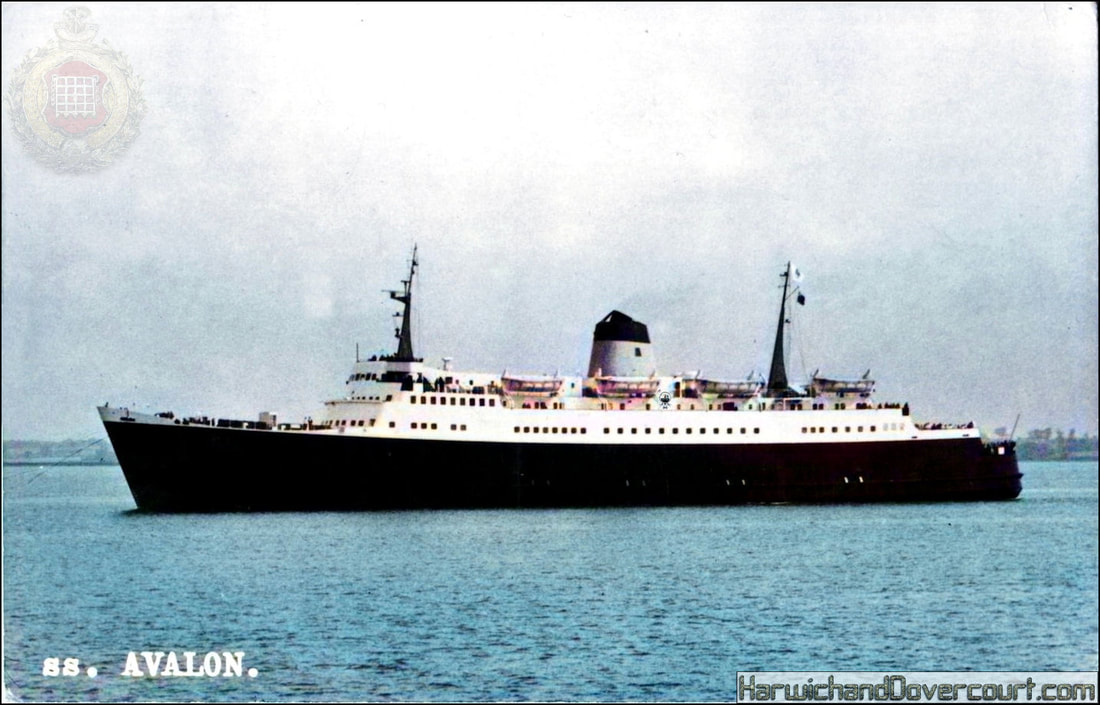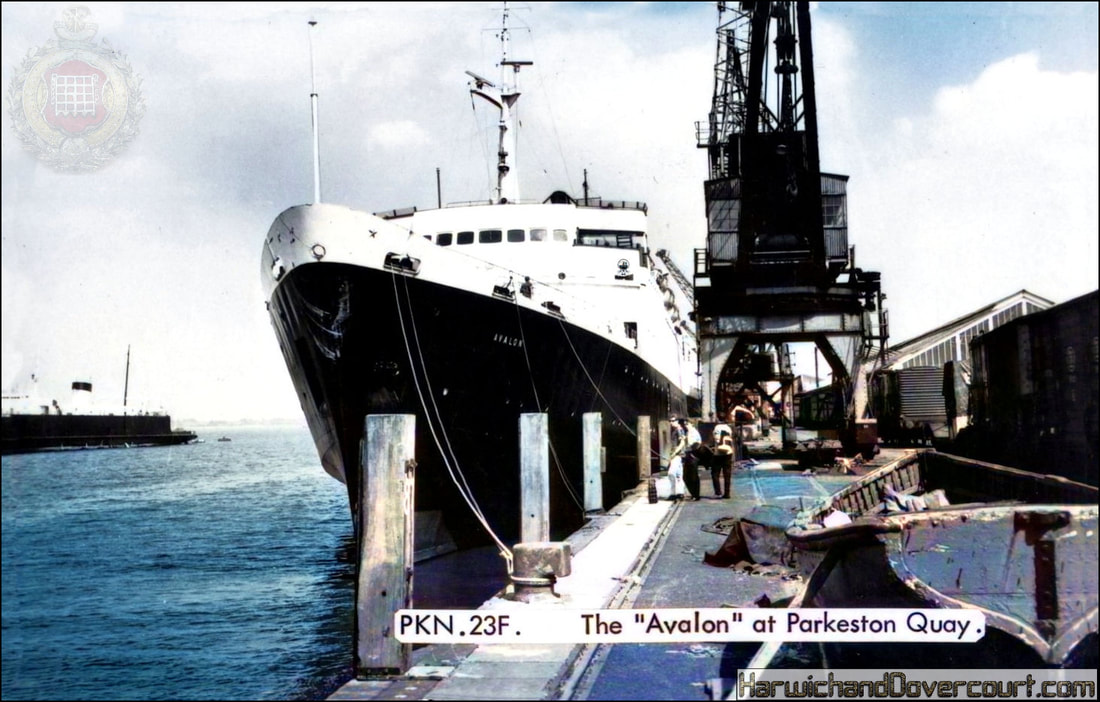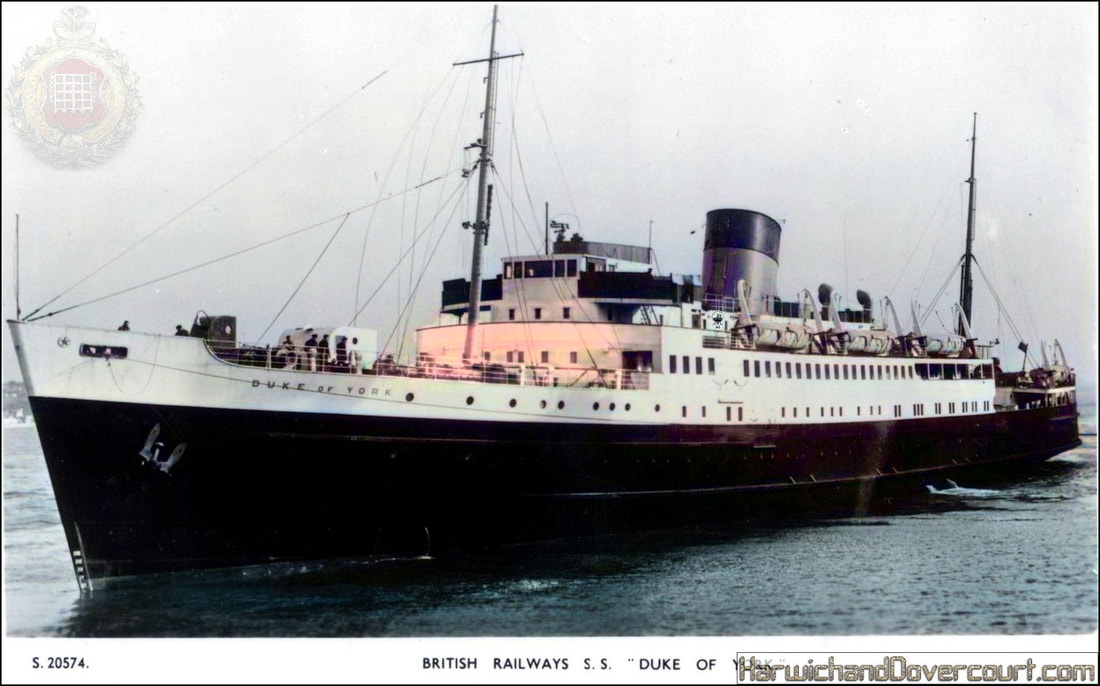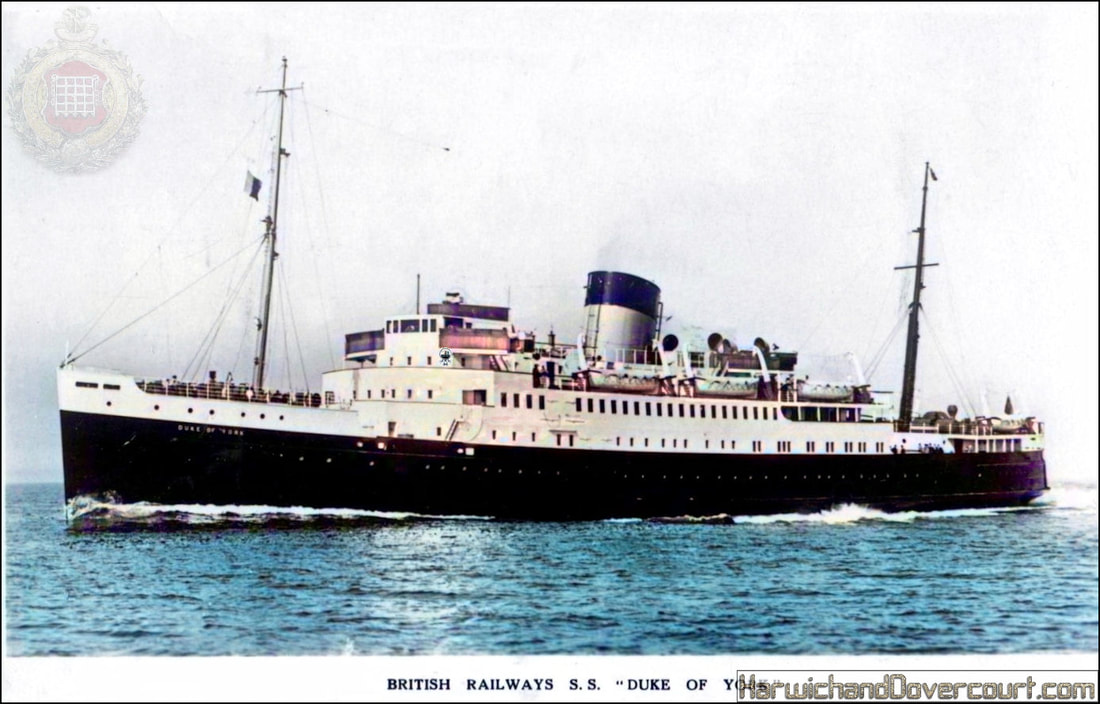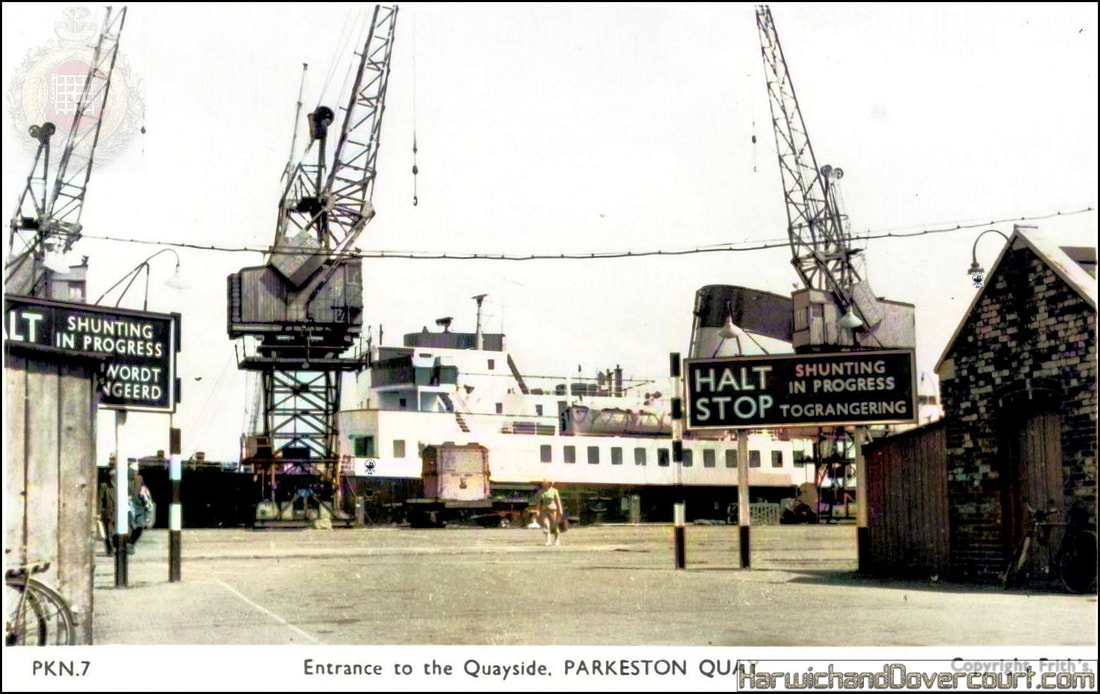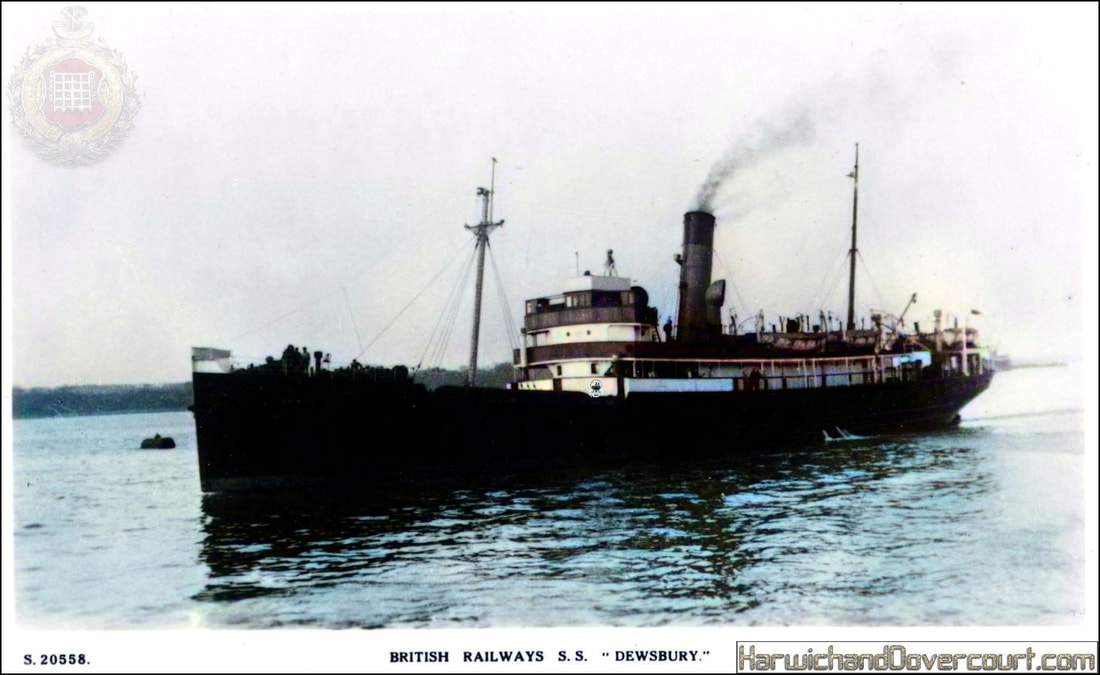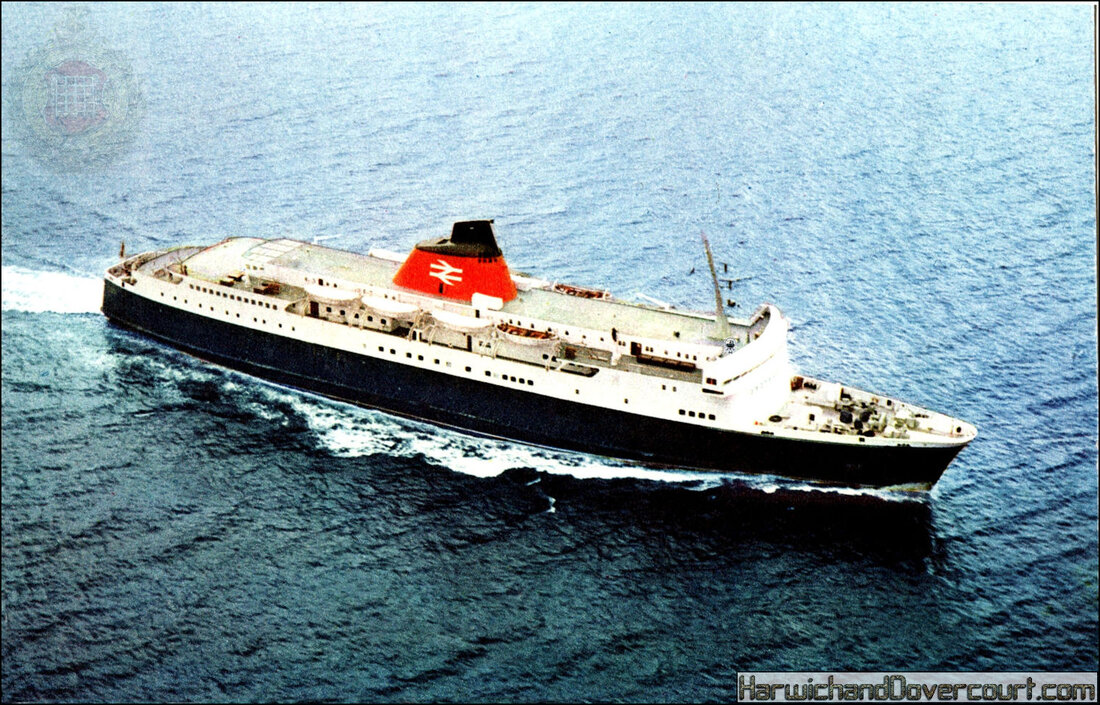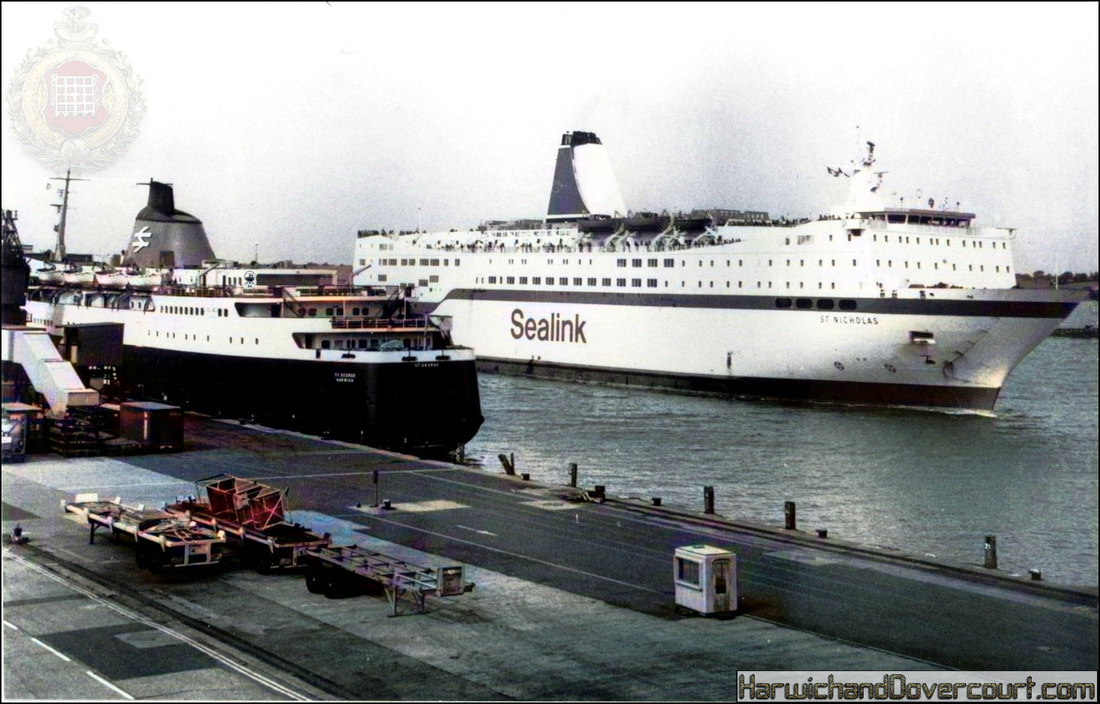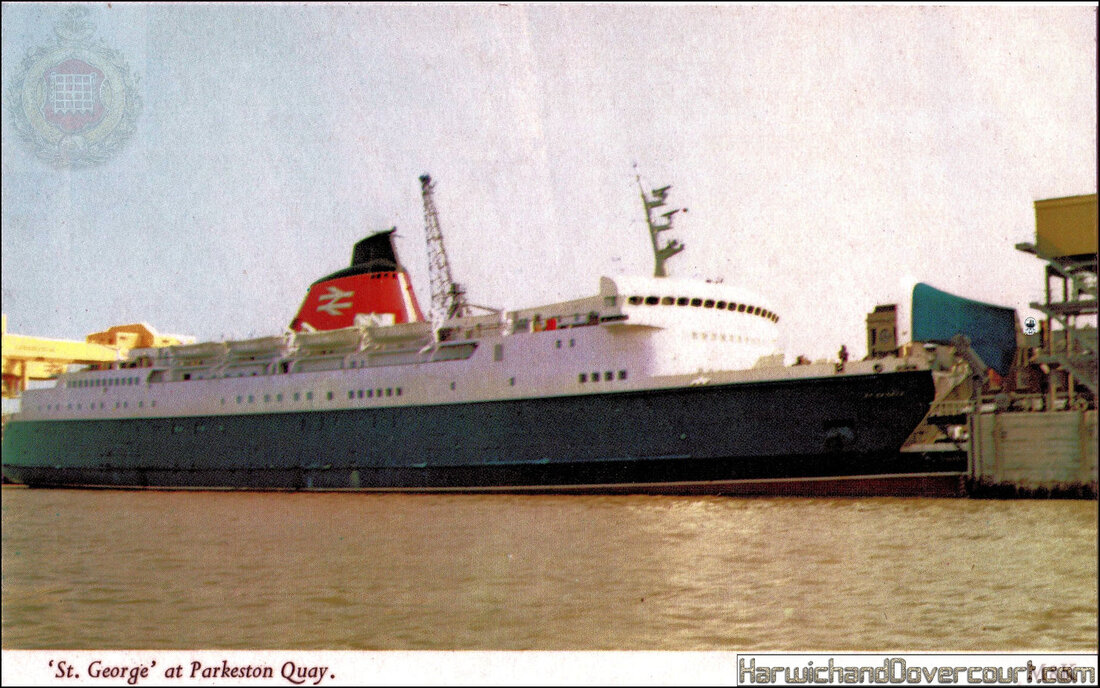~ British ~ Rail Oil Burning Ships ~
British Rail Shipping
British Railways operated a number of ships from its formation in 1948 on a variety of routes. Many ships were acquired on nationalisation, and others were built for operation by British Railways or its later subsidiary, Sealink. Those ships capable of carrying rail vehicles were classed under TOPS as Class 99.
British Railways operated a number of ships from its formation in 1948 on a variety of routes. Many ships were acquired on nationalisation, and others were built for operation by British Railways or its later subsidiary, Sealink. Those ships capable of carrying rail vehicles were classed under TOPS as Class 99.
~ British Railways S.S. Amsterdam H&D (1950) H&D ~
The S.S. Amsterdam was a passenger vessel built for the British Railways in 1950
History
The ship was built by John Brown on Clydebank and launched on 19 January 1950. After a career as a passenger ferry for British Railways she was converted as a cruise ship for Chandris Line and renamed Fiorita. She sank in a storm in waters near Turkey and was later raised and used from 1973 as an accommodation ship. In 1980 she was renamed Ariane II. She capsized and sank in a storm at Fethiye, Turkey, on 27 January 1987.
History
The ship was built by John Brown on Clydebank and launched on 19 January 1950. After a career as a passenger ferry for British Railways she was converted as a cruise ship for Chandris Line and renamed Fiorita. She sank in a storm in waters near Turkey and was later raised and used from 1973 as an accommodation ship. In 1980 she was renamed Ariane II. She capsized and sank in a storm at Fethiye, Turkey, on 27 January 1987.
~ S.20490. British Railways S.S. Amsterdam (1951) Bridge House H&D ~
~ S.S. Amsterdam Night Service to the Hook H&D ~
~ S.S. Amsterdam Harwich To The Hook of Holland ~ Poster (1951) H&D ~
~ British Railways S.S. Amsterdam De-Luxe Cabin H&D ~
~ British Railways S.S. Amsterdam First Class Dining Saloon H&D ~
~ British Railways S.S. Amsterdam First Class Lounge H&D ~
~ British Railways S.S. Amsterdam First Class Lounge Cocktail Bar H&D ~
~ SS Avalon (1963) H&D ~
Built in 1963 by Alexander Stephen & Sons, Glasgow. Served until 1980 when sold to Seafaith Navigation Co, Limassol, Cyprus and renamed Valon. Scrapped at Gadani Beach, Pakistan in January 1981
~ The Avalon at Parkeston Quay. PKN.23F. (1963) H&D ~
~ S.20574. British Railways S.S. Duke of York (1950) Kingsway H&D ~
The Duke of York was a steamer passenger ship initially operated by the London Midland and Scottish Railway which saw service from 1935 to 1964. She was renamed HMS Duke of Wellington for the duration of World War II.
In service
Built at Harland & Wolff, Belfast and completed in 1935, she was designed to operate as a passenger ferry on the Heysham to Belfast, alongside the existing 1928 ships on that route, RMS Duke of Lancaster, the RMS Duke of Rothesay and the RMS Duke of Argyll. She introduced a new principle into the cross-channel trade, the tourist class, which had been in use on the Atlantic lines since 1928. The Duke of York had one of the earliest automatic fire extinguishers, by Grinnell. Small glass tubes contained a liquid which expanded on a given temperature being reached, and burst the containers, opening water valves above.
HMS Duke of Wellington
The Duke of York was requisitioned in 1942 for war service. She was renamed as HMS Duke of Wellington as there was a battleship with the name "Duke of York". She was converted to a "Landing Ship, Infantry (Hand-Hoisting)"; the latter part referred to her hand-operated davits; abbreviated to LSI(H).
The conversions allowed her to carry 250 troops and ten Landing Craft Assault to carry the troops to shore. She also received a 12-pounder gun and eight 20 mm anti-aircraft cannons.
She took part in Operation Jubilee, the raid on Dieppe on 19 August 1942, carrying The Black Watch (Royal Highland Regiment) of Canada. She took part in the Normandy landings in 1944.
At the end of the war, she transported troops between Tilbury and Ostend.
Post-World War IIShe reverted to her original name after the war, and in May 1948 she was transferred to the Harwich to Hook of Holland service, alongside the Arnhem.
Originally a twin-funnel vessel, she was rebuilt in 1950 with a single funnel. She was upgraded from coal to oil firing and received cabin accommodation for 520 passengers.
On 6 May 1953, she collided in fog with the American freighter USNS Haiti Victory. Six passengers were killed and the bow was completely sheared off just in front of the bridge. The ship's Bosun, William Albert Warner, was subsequently awarded the Order of Industrial Heroism for rescuing three people after the collision.
Palmers Shipbuilding & Iron Company of Jarrow completely rebuilt her with a more modern-shaped bow, and they lengthened her by about 7 ft. She rejoined the Harwich fleet in 1954.
After operating its last voyage from Hook of Holland on 20 July 1963, Duke of York was sold in August 1963.
In service
Built at Harland & Wolff, Belfast and completed in 1935, she was designed to operate as a passenger ferry on the Heysham to Belfast, alongside the existing 1928 ships on that route, RMS Duke of Lancaster, the RMS Duke of Rothesay and the RMS Duke of Argyll. She introduced a new principle into the cross-channel trade, the tourist class, which had been in use on the Atlantic lines since 1928. The Duke of York had one of the earliest automatic fire extinguishers, by Grinnell. Small glass tubes contained a liquid which expanded on a given temperature being reached, and burst the containers, opening water valves above.
HMS Duke of Wellington
The Duke of York was requisitioned in 1942 for war service. She was renamed as HMS Duke of Wellington as there was a battleship with the name "Duke of York". She was converted to a "Landing Ship, Infantry (Hand-Hoisting)"; the latter part referred to her hand-operated davits; abbreviated to LSI(H).
The conversions allowed her to carry 250 troops and ten Landing Craft Assault to carry the troops to shore. She also received a 12-pounder gun and eight 20 mm anti-aircraft cannons.
She took part in Operation Jubilee, the raid on Dieppe on 19 August 1942, carrying The Black Watch (Royal Highland Regiment) of Canada. She took part in the Normandy landings in 1944.
At the end of the war, she transported troops between Tilbury and Ostend.
Post-World War IIShe reverted to her original name after the war, and in May 1948 she was transferred to the Harwich to Hook of Holland service, alongside the Arnhem.
Originally a twin-funnel vessel, she was rebuilt in 1950 with a single funnel. She was upgraded from coal to oil firing and received cabin accommodation for 520 passengers.
On 6 May 1953, she collided in fog with the American freighter USNS Haiti Victory. Six passengers were killed and the bow was completely sheared off just in front of the bridge. The ship's Bosun, William Albert Warner, was subsequently awarded the Order of Industrial Heroism for rescuing three people after the collision.
Palmers Shipbuilding & Iron Company of Jarrow completely rebuilt her with a more modern-shaped bow, and they lengthened her by about 7 ft. She rejoined the Harwich fleet in 1954.
After operating its last voyage from Hook of Holland on 20 July 1963, Duke of York was sold in August 1963.
~ The S.S. Duke Of York British Railways (1952) H&D ~
~ Entrance to the Quayside, Parkeston Quay with Duke of York in port (1959) Frith's ~
~ S.20558 British Railways - S.S. Dewsbury (1950) Bridgehouse H&D ~
SS Dewsbury was a passenger and cargo vessel built for the Great Central Railway in 1910.
History
The ship was built by Earle's Shipbuilding of Hull and launched in 1910. She was one of an order for four ships, the others being Bury, Blackburn and Accrington. She undertook her maiden voyage from Grimsby to Antwerp on 17 June 1910 with Sir Alexander Henderson, chairman of the Great Central Railway and a number of the directors, and of the Humber Commercial Railway and Dock Company.
She was in Hamburg at the outbreak of the First World War, but managed to escape and returned safely to Grimsby.
In 1915 she was hired by the Great Western Railway during a dispute with its sailors and firemen over pay. She was deployed on the Fishguard to Cork service.
In 1923 she transferred to the London and North Eastern Railway. In October 1928 she collided with the German steamer Lulealf at Hamburg, resulting in damage to both vessels.
In 1935 she transferred to Associated Humber Lines. On 25 October 1936 the Captain and crew rescued the crew of the Dutch motor vessel Albion in the North Sea. Captain A.J.E. Snowden and nine members of the crew were recognised for their gallantry in risking their own lives in terrific seas.
She was scrapped in March 1959.
History
The ship was built by Earle's Shipbuilding of Hull and launched in 1910. She was one of an order for four ships, the others being Bury, Blackburn and Accrington. She undertook her maiden voyage from Grimsby to Antwerp on 17 June 1910 with Sir Alexander Henderson, chairman of the Great Central Railway and a number of the directors, and of the Humber Commercial Railway and Dock Company.
She was in Hamburg at the outbreak of the First World War, but managed to escape and returned safely to Grimsby.
In 1915 she was hired by the Great Western Railway during a dispute with its sailors and firemen over pay. She was deployed on the Fishguard to Cork service.
In 1923 she transferred to the London and North Eastern Railway. In October 1928 she collided with the German steamer Lulealf at Hamburg, resulting in damage to both vessels.
In 1935 she transferred to Associated Humber Lines. On 25 October 1936 the Captain and crew rescued the crew of the Dutch motor vessel Albion in the North Sea. Captain A.J.E. Snowden and nine members of the crew were recognised for their gallantry in risking their own lives in terrific seas.
She was scrapped in March 1959.
~ British Rail S.S. Saint George (1970) H&D ~
Steel twin screw motor vessel built in 1968 by Swan, Hunter & Tyne Shipbuilders Ltd, West Yards, Walker-on-Tyne, (Yard No. 2029) for British Railways as a passenger, car and commercial vehicle ferry
